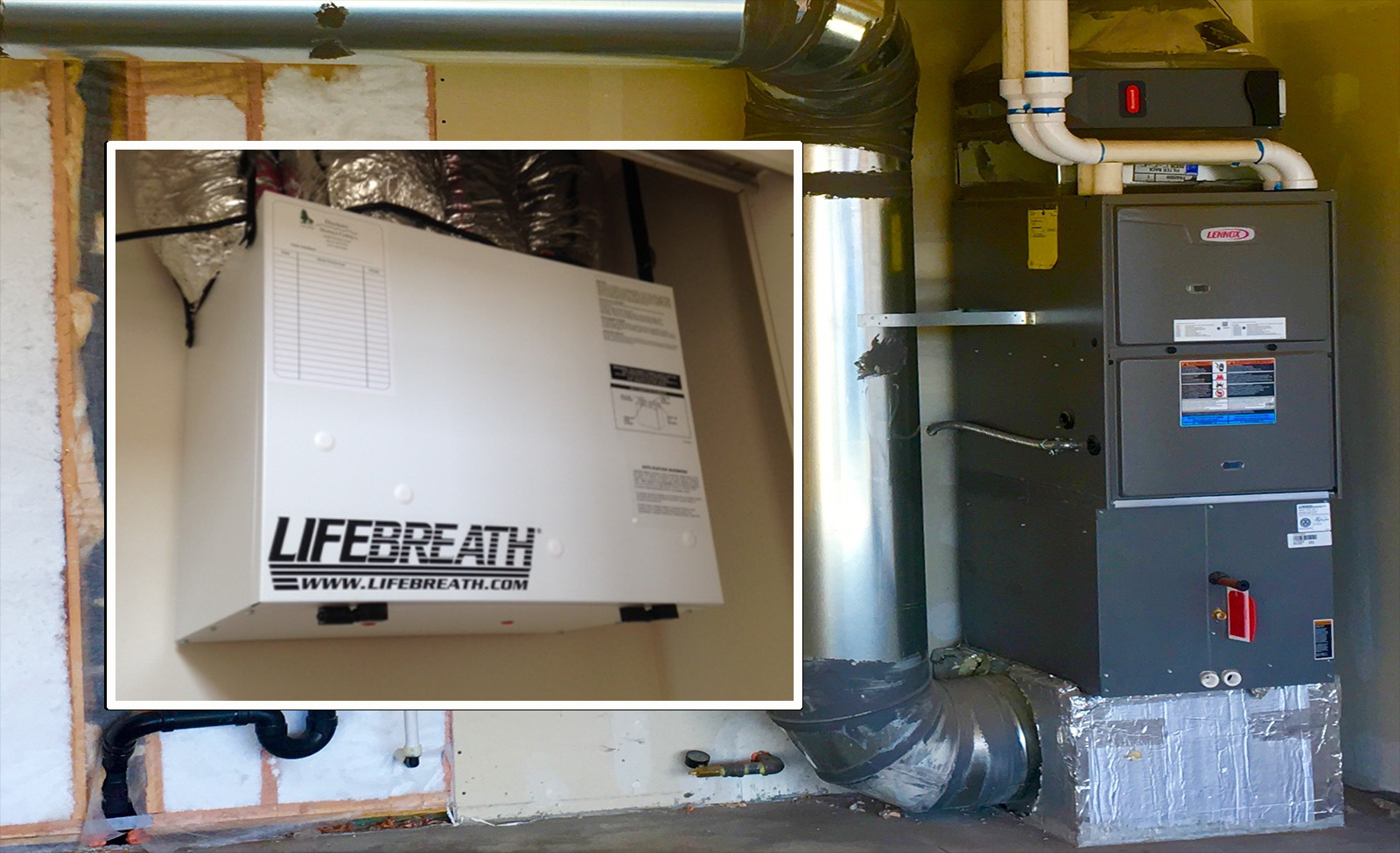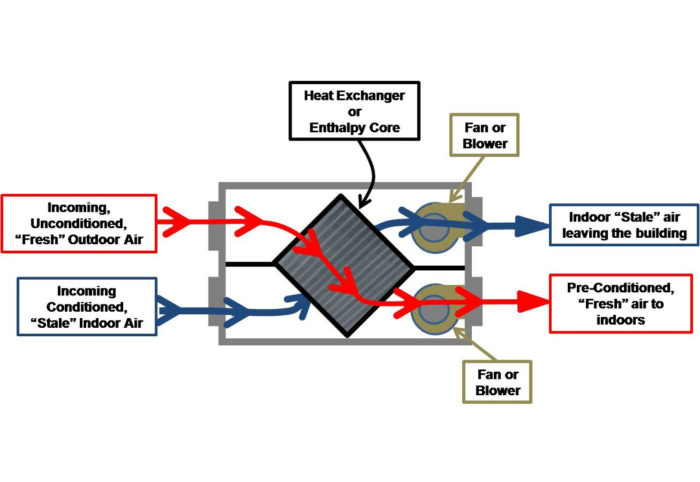Frequently Asked Questions About HRV Explained
Wiki Article
Just How Heat Recovery Ventilation Improves Indoor Air Top Quality and Reduces Energy Costs
Heat Recovery Ventilation (HRV) systems play a crucial function in improving interior air quality while simultaneously lowering energy expenses. By efficiently exchanging stagnant indoor air with fresh outside air, HRVs help preserve ideal humidity and lower pollutants. In addition, their ability to recuperate warmth from outbound air lessens the strain on heating and cooling down systems. As power costs remain to rise, recognizing the complete potential of HRV systems comes to be progressively important for home owners and services alike.Recognizing Heat Recovery Ventilation Solutions

Heat recovery ventilation (HRV) systems play an important duty in improving interior air high quality, specifically in contemporary, energy-efficient structures. These systems are developed to move heat from the outward bound stale air to the inbound fresh air, thus reducing energy loss while keeping optimal temperature degrees inside. HRVs include a heat exchanger, fans, and ductwork, assisting in the continual flow of air. By expelling indoor pollutants and presenting fresh air, HRVs help to stabilize humidity degrees, protect against mold development, and minimize allergens. The efficiency of HRV systems exists in their capacity to recover as much as 80% of the heat from the exhausted air, promoting energy preservation while making certain a healthy indoor environment. Their integration is vital in attaining lasting living practices.
The Significance of Indoor Air Top Quality
Indoor air quality (IAQ) is a crucial variable influencing the health and well-being of occupants in any kind of setting. Poor IAQ can cause different health concerns, consisting of breathing issues, allergies, and fatigue. In addition, it can worsen current conditions such as bronchial asthma. Elements contributing to reduced IAQ include toxins from indoor resources like cleaning up agents, mold and mildew, and insufficient ventilation. Keeping great IAQ is essential for advertising a risk-free and comfortable living or working space. Efficient techniques to boost IAQ include normal tracking of air top quality, proper air flow systems, and decreasing making use of hazardous materials indoors. By focusing on IAQ, individuals can ensure a much healthier environment that promotes performance and overall lifestyle.Energy Effectiveness Conveniences of HRV Solutions
Several homeowners and building supervisors are significantly recognizing the energy effectiveness advantages of warmth recuperation air flow (HRV) systems. By moving heat from tired interior air to incoming fresh air, HRV systems substantially lower the power required for heating & cooling. This process reduces dependence on traditional a/c systems, bring about reduced energy expenses. Furthermore, HRVs help maintain a balanced interior environment, protecting against too much heating or cooling demands. The ability to recoup approximately 90% of the warmth from outgoing air also sustains sustainability efforts by reducing general power intake. Consequently, HRV systems contribute not only to cost investigate this site savings however likewise to a lowered carbon impact, straightening with the expanding focus on energy-efficient building practices.Installation and Upkeep Considerations
The efficient application of heat recovery air flow (HRV) systems requires cautious consideration of installation and maintenance elements to assure peak performance. Proper positioning of the HRV unit is crucial, as it must be installed in a location that makes the most of air look at this website movement while lessening noise interruption. In addition, ductwork should be suitably sized and insulated to protect against energy loss. Regular upkeep, including filter substitute and system cleansing, is vital to safeguard optimal performance and interior air quality. Owners need to establish a routine upkeep timetable to identify and attend to possible issues prior to they rise. Collaboration with knowledgeable experts throughout both setup and maintenance stages can enhance the long life and effectiveness of HRV systems, inevitably causing better interior environments and decreased power prices.
Real-World Applications and Success Stories
Exploring real-world applications of warm recuperation air flow (HRV) systems reveals their significant effect on indoor air high quality and power performance throughout numerous setups. In household structures, home owners have actually reported better air top quality, resulting in less allergic reactions and respiratory concerns. Schools implementing HRV systems have kept in mind boosted pupil focus and lowered absence as a result of far better air flow. Business structures, such as offices and retail spaces, have experienced lower power prices and boosted worker efficiency. For instance, a corporate workplace in a pleasant environment accomplished a 30% reduction in energy costs after setting up image source an HRV system. These success stories demonstrate that HRV technology not only adds to much healthier environments yet additionally gives concrete financial advantages, making it a beneficial investment for numerous markets.Often Asked Inquiries
Can HRV Solutions Decrease Irritants in Indoor Air?
The performance of HRV systems in lowering interior irritants largely depends upon their capacity to filter and exchange air. HRV Heat Recovery Ventilation. By continually changing stale air, these systems can substantially decrease irritant levels throughout interior environments
Just How Does Humidity Affect HRV System Performance?
Humidity significantly influences HRV system performance; high levels can bring about condensation, decreasing efficiency, while reduced moisture might improve air exchange. Stabilizing moisture is important for ideal procedure and maintaining interior air high quality.Are HRV Systems Noisy Throughout Operation?
HRV systems can create differing sound degrees throughout procedure, depending upon their style and setup. Some systems operate silently, while others may create visible audio, particularly at greater airflow setups or when poorly kept.What Is the Typical Life-span of an HRV System?

Can HRV Solutions Be Made Use Of in All Environments?
HRV systems can be used in numerous climates, yet their effectiveness may vary - HRV Heat Recovery Ventilation. In severe temperatures, changes or supplemental systems may be necessary to guarantee optimal efficiency and comfort while maintaining indoor air high qualityReport this wiki page